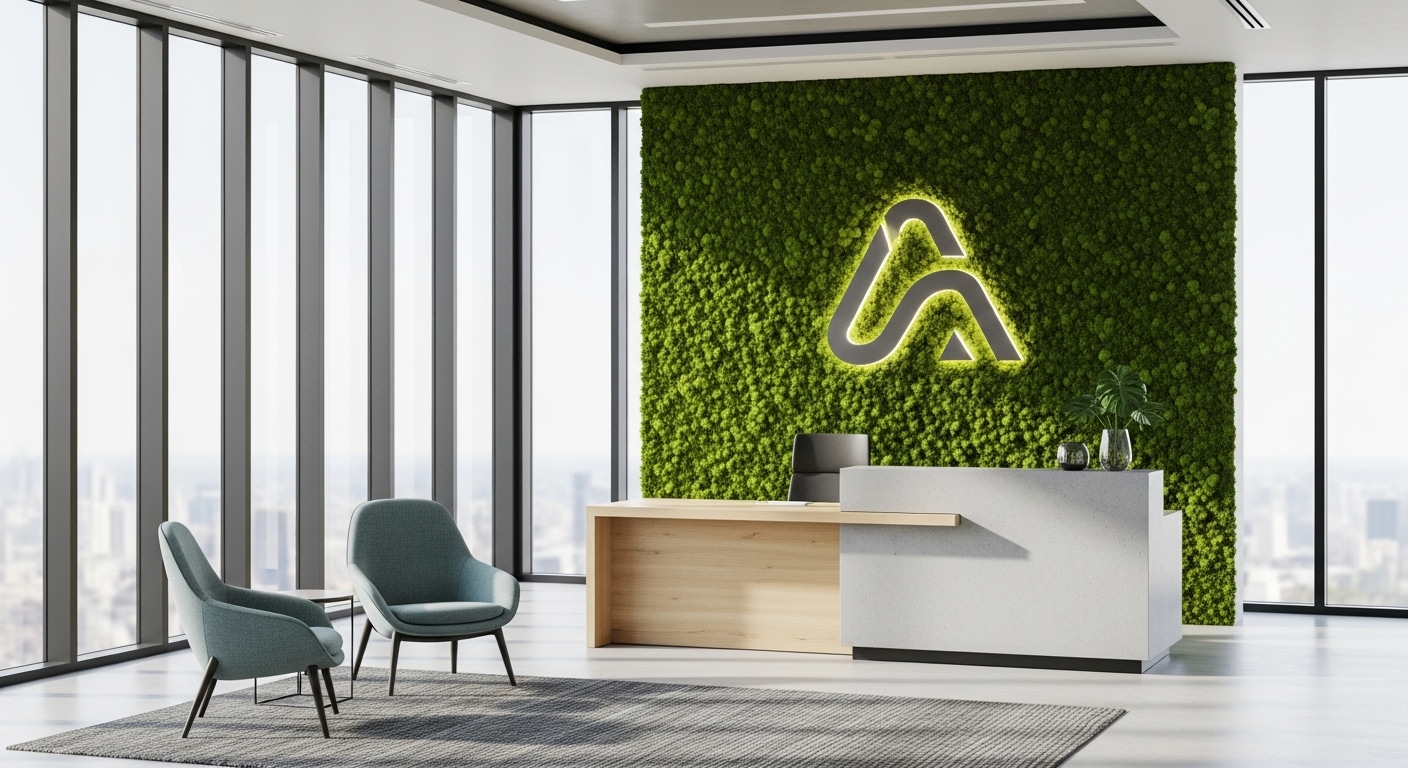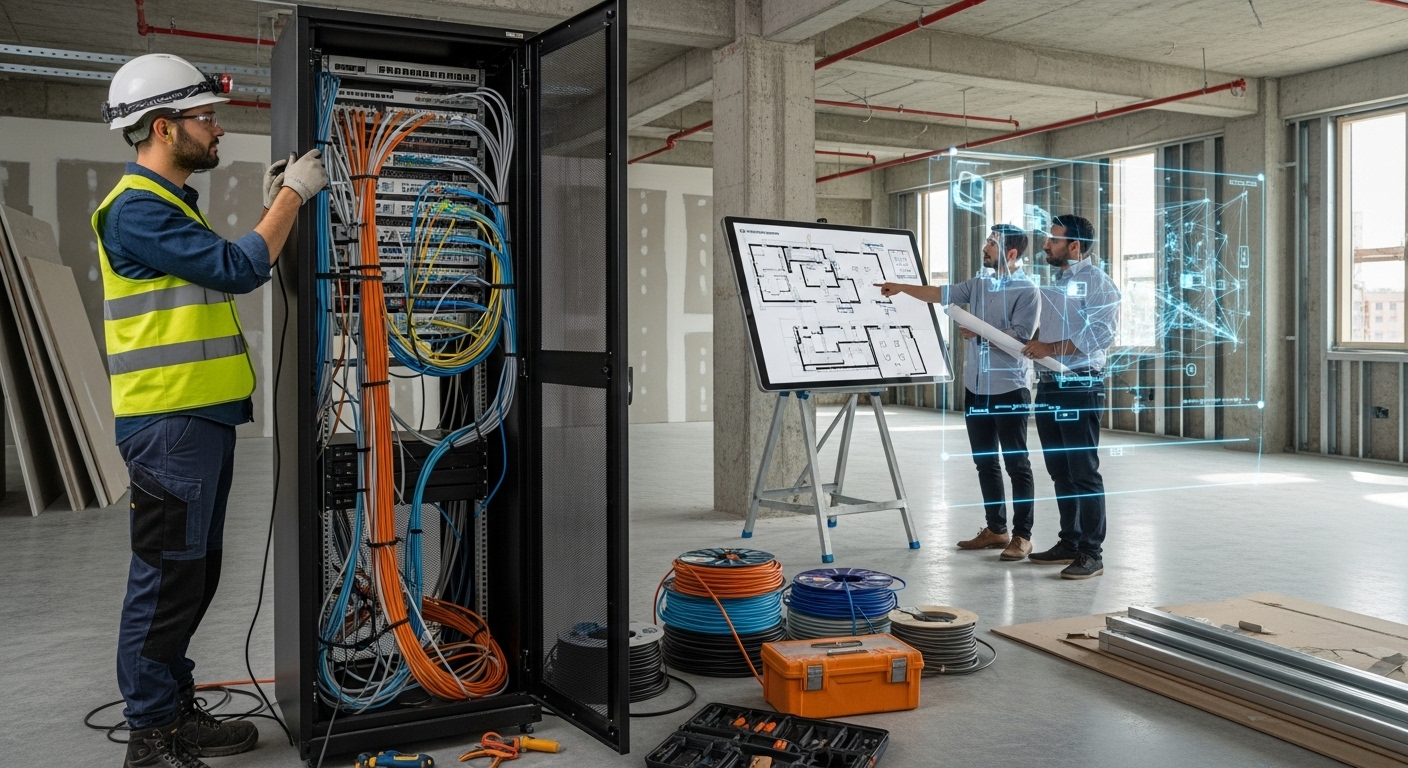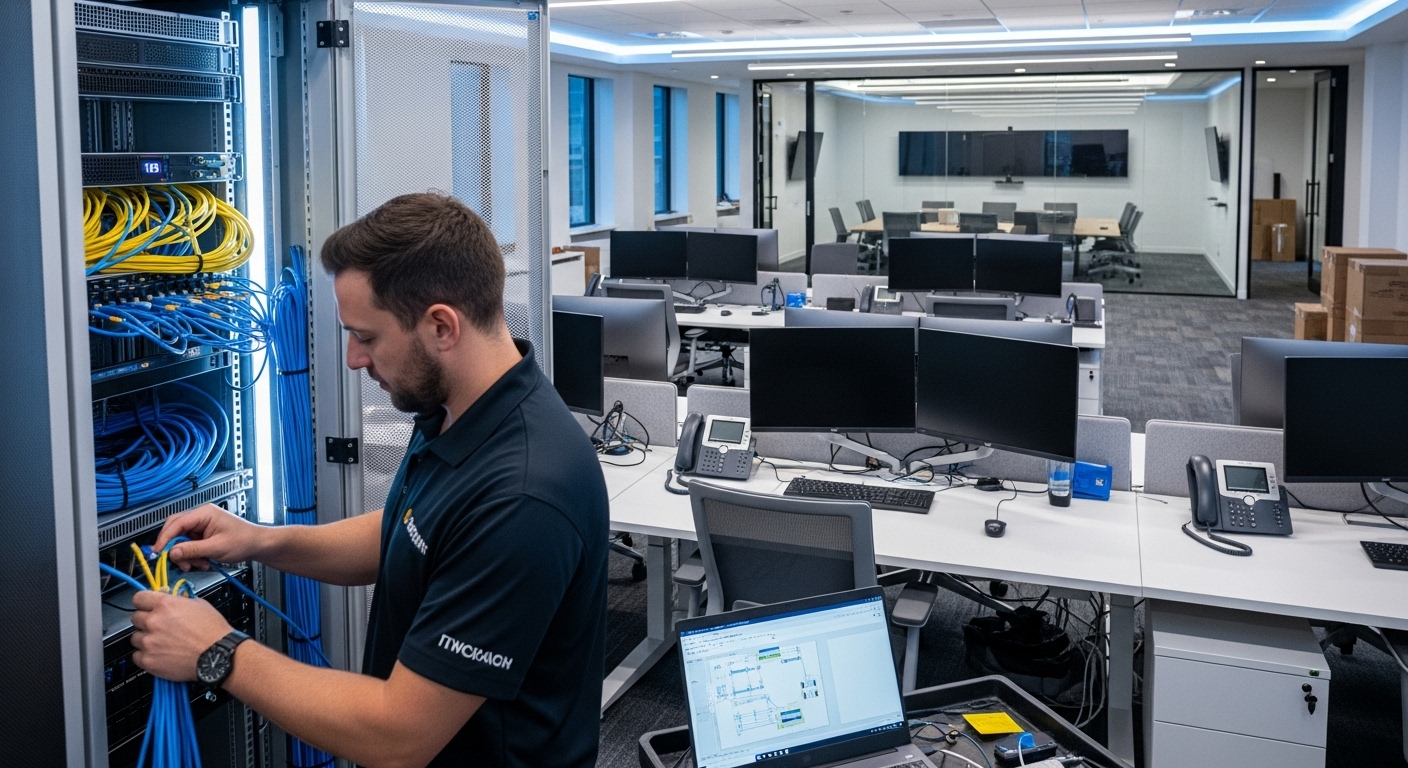In today’s competitive landscape, the most successful companies understand that a brand is not just a logo or a color palette; it’s a comprehensive experience. Yet, many organizations overlook one of their most powerful brand assets: their physical workspace. Too often, offices are treated as mere containers for desks and people—functional but soulless spaces that do little to inspire or communicate purpose. This approach is a missed opportunity. An authentically branded environment transforms a simple office into a strategic tool that can attract top talent, reinforce company culture, and boost employee engagement. As businesses navigate the complexities of hybrid work and the renewed focus on creating ‘destination’ workplaces, understanding how to infuse your physical space with your brand’s unique DNA has never been more critical. This guide moves beyond the superficial to provide a strategic framework for turning your four walls into a living, breathing extension of your brand identity, covering everything from decoding your core values into design principles to extending that experience to a distributed workforce.
Decoding your brand DNA for physical space
Before selecting a single paint color or piece of furniture, the foundational step in branding your space is a deep, strategic dive into your brand’s core identity. This process, far from being a purely aesthetic exercise, is about translation—turning the abstract concepts of your mission, vision, and values into a tangible design language. The goal is to create a space that doesn’t just display your brand but embodies it. Start by gathering key stakeholders for workshops aimed at answering fundamental questions: What promises do we make to our customers? What behaviors do we value in our team? What is the personality of our brand—is it innovative, trustworthy, playful, or sophisticated? The answers to these questions form the basis of your design brief. For example, a company that values ‘transparency’ might prioritize glass walls, open-plan layouts, and accessible leadership offices. A brand built on ‘sustainability’ would naturally gravitate towards reclaimed materials, biophilic elements like living walls, and energy-efficient systems. This initial phase involves analyzing all brand touchpoints, from marketing materials to internal communications, to distill a consistent narrative. This narrative becomes the guiding star for every subsequent design decision, ensuring the final environment feels authentic and coherent, rather than like a collection of random, trendy ideas.
The psychology of color and materials
Once you have a clear understanding of your brand’s DNA, you can begin to build a sensory palette using color and materials. These elements are powerful communicators, capable of evoking emotion and shaping perceptions on a subconscious level. Color psychology is a well-documented field; blue often conveys trust and stability, making it a favorite for financial and tech firms, while yellow can stimulate creativity and optimism, ideal for innovation hubs. However, applying this is not as simple as painting a wall with your primary brand color. The strategy lies in nuance. Use your main brand colors as accents in key areas like reception or social hubs, while employing a broader, complementary palette throughout the workspace to create different moods. Neutral tones can promote focus in work zones, while brighter hues can energize collaborative areas. Materials are equally important in telling your brand’s story. The texture and origin of a material carry inherent meaning. Polished concrete and exposed steel might communicate an industrial, innovative, or minimalist brand identity. Conversely, warm woods, soft textiles, and natural stone can create a sense of comfort, stability, and connection to nature, aligning with brands that value well-being and sustainability. The key is to create a cohesive material language that reinforces your brand’s personality at every touchpoint, from the reception desk’s finish to the fabric on the chairs in a meeting room.
Weaving your narrative with environmental graphics
Environmental graphics are the most direct way to tell your brand’s story within a space, transforming blank walls into compelling narrative canvases. This goes far beyond simply placing a logo in the lobby. Effective environmental graphics are about creating immersive experiences that communicate who you are, where you’ve come from, and where you’re going. Consider a large-scale timeline mural that documents key company milestones, celebrating the journey and the people who made it happen. This not only reinforces a sense of history and pride for employees but also serves as a powerful talking point for visiting clients and partners. Another impactful technique is to use typography to display company values or mission statements in a visually engaging way. Instead of a generic poster, imagine a core value artfully integrated into the architecture of a central staircase or subtly etched into glass partitions. This makes the values a constant, ambient reminder of the company’s guiding principles. Data can also be a source of compelling graphics. For a tech company, visualizing complex data sets as beautiful, abstract art can showcase its expertise and innovative spirit. The goal is to create layers of discovery, allowing employees and visitors to engage with the brand on multiple levels, from a quick glance to a more detailed exploration. These graphic interventions make the space uniquely yours and turn it into a dynamic storytelling medium.
Integrating technology to animate your brand
In a digital-first world, a static branded environment can feel outdated. Integrating technology is key to creating a dynamic and responsive space that reflects a modern, forward-thinking brand. This isn’t about adding screens for the sake of it, but about using technology purposefully to enhance the brand experience and streamline the workday. Digital displays in reception areas are a prime example. Instead of a static welcome sign, these screens can feature a rotating gallery of employee spotlights, recent project successes, welcome messages for specific clients, or live social media feeds. This creates a living, breathing entrance that immediately communicates the company’s energy and current focus. Interactive installations can take this a step further, inviting visitors and employees to engage directly with the brand’s story or products. For example, an interactive map could showcase the company’s global reach, or a touch-screen wall could provide a deep dive into its service offerings. Beyond displays, technology can be woven into the fabric of the office itself. Branded room-booking systems, custom user interfaces on collaborative tools, and even curated audio soundscapes in common areas can all subtly reinforce the brand identity. The ultimate goal is for the technology to feel seamless and intuitive, a natural extension of the brand that makes the space smarter, more engaging, and more reflective of a company poised for the future.
Designing for culture and employee experience
A branded environment is ultimately for the people who use it every day. The most beautiful space will fail if it doesn’t support the work and well-being of your team. Therefore, every design decision must be filtered through the lens of employee experience and company culture. The physical layout of the office should be a direct reflection of your organizational values. If collaboration is a cornerstone of your culture, the design must facilitate it with a variety of meeting spaces—from open, informal huddle spots with whiteboards to enclosed, tech-enabled conference rooms for focused teamwork. If your brand champions deep work and innovation, providing quiet zones, private pods, and a library-like atmosphere is essential. Creating a ‘neighborhood’ or ‘zoning’ concept is an effective strategy. Different zones can cater to different types of work and energy levels, giving employees the autonomy to choose the environment that best suits their task at hand. Branding these zones can further reinforce their purpose; for instance, the ‘Innovation Lab’ might have a more raw, industrial feel, while the ‘Zen Room’ uses natural materials and soft lighting. Amenities also play a critical role. A company that values health and well-being should invest in an inviting kitchen with healthy snacks, fitness facilities, and spaces for mindfulness. By designing the space to support desired behaviors, you move from passively stating your culture to actively enabling it.
Beyond the office walls: branding for a hybrid world
As work becomes increasingly distributed, a brand’s environment is no longer confined to a single physical location. A truly effective branding strategy must create a cohesive and equitable experience for all employees, whether they are in the office full-time, working remotely, or splitting their time between the two. The office itself transforms from the sole place of work into a ‘center of gravity’—a hub for collaboration, culture-building, and connection. This means the in-office experience must be compelling and intentionally designed. However, that experience needs to be extended to remote team members. This can be achieved through thoughtfully curated ‘welcome kits’ for new hires, containing high-quality, branded equipment and merchandise that make them feel part of the team from day one. Companies can also provide stipends for home office setups, ensuring remote employees have an ergonomic and productive environment. Digitally, the brand must be consistent. This includes providing professionally designed virtual backgrounds for video calls that mirror the aesthetic of the physical office, as well as ensuring that all digital collaboration tools have a clean, consistent user interface. Virtual events, all-hands meetings, and social gatherings should be produced with high quality, creating a shared experience that transcends geography. By thinking of the ‘workplace’ as an ecosystem rather than a single building, you ensure that your brand, culture, and sense of community remain strong and unified for your entire workforce.
In conclusion, branding your workspace is a powerful, strategic endeavor that pays dividends in culture, engagement, and talent acquisition. It’s a definitive move away from the generic offices of the past and toward creating meaningful destinations that resonate with both employees and clients. The process begins with a deep, introspective look at your brand’s core DNA—its mission, vision, and values—which serves as the blueprint for all subsequent decisions. From there, every element, from the psychological impact of colors and materials to the narrative power of environmental graphics, becomes a deliberate choice in telling your unique story. Integrating technology animates this story, while designing for the employee experience ensures the space is not just beautiful but functional and supportive of your culture. In our new hybrid reality, this philosophy must extend beyond the physical walls, creating a unified brand ecosystem for every team member. By viewing your workspace not as an overhead cost but as a dynamic communication tool, you unlock its potential to become a true competitive advantage. You create a place where your brand is not just seen, but felt—a place where your team can do their best work because they are constantly surrounded by the purpose that drives it.





